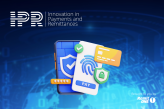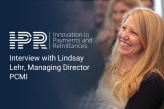Video: The Rise of Digital Remittances – How to capitalise? April 14, 2022

Continuing our recent discussions exploring the evolution of the remittance sector, RemitONE hosted their IPR EMEA event on 2-3 March 2022. The 90-minute panel session centred around the future of digital remittances.
The panel consisted of experts from both RemitONE and our friends and partners in other global companies. In case you missed the discussion, here is a summary of the key insights.
Webinar moderator:
- Oussama Kseibati, Associate Sales Director, RemitONE
Panellists:
- Richard Arundel, Chief Evangelist & Co-Founder of Currencycloud
- Assad Alawneh, Owner at Alawneh Exchange
- Luke Flomo, CRO of Vyne Payments
- Walter D’Cruz, CEO of Moneo Solutions
We have seen a drastic change in the payments industry in the last five to six years, especially in E-payments or wallet payments. In your view, what have been the main developments in the industry. Do you think these developments are to stay? And is the growth of digital payments sustainable post-COVID.
Richard: There’s a lot to unpack in that question. And you’re right, there’s been a load of change over the last five or six years in the payments industry. Firstly, we’ve seen huge advances in core technology. And, in particular, customer trust in this technology. We’ve seen, especially in the MTO and the remittance space, a rapid rise in digital-first MTOs, which has driven more established MTOs to respond by rapidly introducing some conditional initiation funding capabilities. Nearly a third of incumbent remittance companies have now become digital. And the pandemic has obviously accelerated the kind of these digital trends.
I think, on the technology side, more and more of these products and services delivered by technology and accessible by API’s so the menu that remittance companies can choose from has just gotten bigger and easier to read. In terms of mobile banking, as well, mobile apps and mobile banking downloads are going up 50% year on year, and people are preferring this digital method.
Another area where I’ve seen a huge change in development is customer expectation. There was already a rise pre-pandemic as a digital company, but you add on the impact of COVID and this heightened digital expectation and we’ve seen a huge shift to digital products. And it’s driven these traditionally non-digital companies to think much more digitally. So, there’s this new age of competition.
What new technological advances are now being utilized in the digital remittance industry, particularly in your area or space?
Assad: I’d like to talk about the main elements of the technology, which is considered API. I think that the development of the API’s makes significant changes to the industry and to how we connect with partners – we connect with other services and provide the services in a different way. API’s are now a key driver for FinTech and for the payments industry. Without the API’s we wouldn’t be able to provide digital payments or even mobile applications, or payments through the mobile application, sending and receiving the remittances through the API or through the mobile application.
I think as well, this will increase the volume of the transaction because I think FinTech companies, now, their main development they have is the API because they can connect to any other service providers in the industry. Through the API’s, we can even improve the customer journey with the service. So, we have been able to provide payments through them with the application because we are able to connect to payments because if you want to provide a mobile application, for example, to send my resume by application, you need a way to pay for the transaction through your bank account or via the debit card. So again, this is connected through the API’s, and this technology as well.
Where does open banking fit into all of this? How does it work? What are the benefits for money transfer businesses?
Luke: The UK open banking framework that’s been created has helped in many respects, and gained access to payments infrastructure. But I think one of the key problems is the fact that the banks today aren’t incentivized to open up their back end in terms of all that information and data, because they’ve spent years and years capturing it. And now essentially, PSD two, as stipulated, they need to now open up all that data for free. And I think one of the big points that we need to work with these organizations from a FinTech perspective across the board is how do we help them to monetize that data to a certain extent, and how do we then consume it in a really accessible way, that means that we can reduce friction for a consumer.
I think one interesting fact is that about 80% of the UK population have now got a smartphone and about 78% of adults are now digitally banked, and 14 million of them have got a digital-only bank account. So, there’s a real demand for this as a utilization of payment infrastructure. Many of you may be aware that open banking hit the 5 million consumer mark. So, consumers are utilizing this type of technology on a day-to-day basis. It’s now up to us in our costs across the globe to start allowing consumers to utilize this payment method in all the different use cases and scenarios.
How can employers leverage technology to expand their networks without necessarily having a presence in that country?
Richard: I think, firstly, if you’re looking at expanding your network, one way to do that is expanding the number of kinds of pay-out corridors or countries you can send money to, which ultimately expands your user base within the country that you’re working in. The second way you can do that is maybe looking at collections as well as payments, for example, we talked earlier about the current rise of e-payments or e-wallets. And thirdly, partnering with companies who can use technology to leverage their licenses and the compliance and their regulation, which enables you to expand on a global basis without necessarily having a presence in the country.
How can crypto and blockchain assist NGOs in facilitating cross border payments?
Walter: Firstly, I sat and watched the first panel today, the first session on digitalization and, you know, a lot of that crossed over to what we’ve been talking about today, which leads me to believe that actually it’s not about crypto and blockchain assisting MTOs, it’s about how they’re going to migrate into the digital world. And blockchain is just one technology platform that will support that move.
However, in today’s world, the cost of compliance is getting higher and higher. And that’s where I see crypto coming into it, in terms of reducing that cost of compliance. In actual fact, the cost of sending money or moving value is going to get cheaper and cheaper, yet the cost of compliance is going up. So that’s where blockchain can assist, it’s not so much in the transfer of value, because it’s a currency right? The value is whatever the market perceives to be. What can you include in that blockchain that will enable better compliance, better transparency, and therefore fewer people or humans touching it, therefore driving your costs up?
Oussama: I think one of the issues with Bitcoin was people are not using it as all it was built for – as a currency. Now it’s obviously more of an investment. And that’s where we see the volatility of it and of course, what’s happened. If crypto is pegged to a fiat currency, then absolutely. But then we get into the question of regulation; is there enough regulation? Is there going to be more regulation? Is it going to help people bypass some sanctions?
What are the critical questions when evaluating a payments vendor gateway provider that we should be asking?
Luke: It really depends on what you’re trying to achieve. In essence, I think most organizations are looking to acquire new consumers, retain existing consumers and make life as simple and as easy as possible for both the consumer and themselves in terms of working practices and UX and UI. So, I think the key thing you should be thinking about or contemplating when looking at a payment gateway and acquiring a vendor or an alternative payment method is where am I operating? Where are my consumers based? And can that organization support me in those specific territories, either with local payment knowledge, insights, data, as well as connectivity? If you’re operating outside of the UK, there are other alternative payment methods to the likes of credit cards, debit cards, and e-wallets, and there are specifically wallets and payment methods in certain territories.
So we know that regulation is one of the biggest challenges in the industry, what new tech is out there to overcome these challenges? Specifically focusing on fraud as being one of the biggest challenges.
Assad: I think for the regulator how do you identify the customer, and if you go back to the rational way where the customer will come to you and present his ID and you can see him in front of you face-to-face, and then you can know this customer is the one dealing with you. And when it comes to digital payments and online payments you have to identify the customer digitally. In order to identify your customer online and have the data available, you can verify the ID verification, you can do it online.
Now, we can do video conferencing, and you can do even voice authentication in order to identify your customer. There are also companies providing the service – again, without the API’s, you will not be able to do this online verification and online customer KYC. Regarding fraud detection, I know they’ve been using big data optimized to analyze the fraud as well. I think artificial intelligence as well as is being used to identify fraud just from legitimate transactions for legitimate customers as well. As I said the video conference can take a live selfie in order to make sure that this person is the same person. So, there’s also technology now helping us to identify customers and again, to be compliant with the regulators and to avoid fraud as well.
Oussama: In terms of regulation and transaction marginal what’s interesting is it depends on which region you’re in. But what also looks quite interesting are the steps that each region has been taking or will have not been taking. As an example, in Jordan, they don’t request any particular reports, they just request if there have been any suspicious activities. Whereas on the other hand, I know that the FCA in the UK do request a specific report and it has to be at those specific intervals. Furthermore, in Dubai, they’re coming up with lots of new regulations, but they again asked for specific reports in specific formats.
Additionally, with AusTrack, the regulatory body for Australia that we’ve built into our system, now produces the AusTrack report and posts it straight to their website. I think it’s quite good because they’ve made those APIs available, so they’re trying to make compliance a little bit more attainable. And again, getting that information directly from the MTO themselves by being able to post that. I just think it’s a much neater way and it opened up the market for people because if they’re abiding by these regulations, that’s fine. So that was what was supposed to happen with PSD two, everyone’s supposed to abide by PSD two, and the banking was supposed to open up for everyone, which unfortunately didn’t happen.
What does the future look like? Will cryptocurrencies replace major hard currencies in international payments?
Walter: I don’t know what the future looks like. No, it changes every moment. But certainly, in certain corridors, crypto or digital currencies will replace hard currencies for international payments or remittances. Whether it be central bank-issued digital currencies, or the likes of Bitcoin, or some specific tethered or stable coin, a token program, most definitely.
But, I think it’s inevitable. It’s going digital and you can’t stop that. I think the big challenge is it isn’t going to replace hard cash in the High Street, no chance. Certainly not in the developing countries where cash is still a big, big way of paying and exchanging goods and services. That’s not going to replace cash, but certainly in developed nations like Europe and the UK.
Richard: I think the underlying technology is really interesting. I also think it depends on time horizons. In the last few years, maybe crypto has been a solution looking for a problem. I think it’s about time now that certain cryptocurrencies or blockchain technology go more mainstream. And you’re going to see more applications for it. And I think there are definitely solutions out there that can use a blockchain-driven solution, whatever crypto or stable coin that might be.
For more information or to request a free consultation with one of our money transfer specialists, please email marketing@remitone.com
What next?
Now that you’ve read our article we want to help you get the most out of it and plan for 2022.
Tap into our experts and schedule a free consultation.
Related Posts
-

Driving Innovation and Customer Trust: The Role of Compliance, Speed, and Transparency in the Evolving Payments Landscape | IPR Global 2024
In today’s fast-evolving payments landscape, security, compliance, and customer expectations are more interconnected than ever. As businesses strive to innovate…
November 14, 2024 -

The Future of Payments and Remittances: Innovations, Real-Time Payments, and Global Financial Inclusion | IPR Global 2024
The payments and remittance industry stands on the brink of remarkable transformation, driven by innovative technologies, evolving consumer expectations, and…
November 14, 2024 -

Interview with Sid Gautam, Senior Vice President, Flutterwave | IPR Global 2023
We sat down with Sid Gautam from Flutterwave during our IPR Global event, to find out the key challenges and…
June 4, 2024 -

Interview with Lindsay Lehr, Managing Director, PCMI | IPR Global 2023
We interviewed Lindsay Lehr from PCMI during our Innovation in Payments and Remittances (IPR) Global event, to share her thoughts…
April 29, 2024 -

Interview with Wayne Gould, former Head of Financial Services, Trust Payments | IPR Global 2023
We interviewed Wayne Gould, former Head of Financial Services at Trust Payments, during our Innovation in Payments and Remittances (IPR)…
March 28, 2024 -

Saudi Arabia and the GCC: How to Tap into one of the World’s Biggest Payments Markets | IPR Global 2023
Join us for an enlightening panel discussion where our expert panellists will delve into the dynamic landscape of payment and…
February 29, 2024